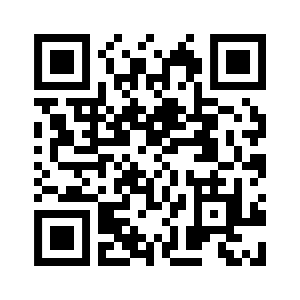
As a small business owner, you have many SMB financing options to consider.
The question is: which one works best for your business?
Knowledge is power, and in today’s article, we’re going to discuss a very popular funding tool:
a business line of credit.
We’ll discuss how a business line of credit works, the main advantages it delivers, and the few drawbacks you might experience with this financing tool.
We’ll end with a brief overview of the best ways to manage your line of credit and promote your long-term business success.
Let’s get started!
What Is a Business Line of Credit?
A business line of credit is a flexible funding option for small businesses. As a form of revolving credit, it allows you to continually withdraw money as needed.
This makes a business line of credit ideal for providing cash flow to cover short-term business needs, like handling payroll costs, making inventory purchases, and covering unexpected expenses.
Typically, a business line of credit has a draw period of between one and five years. Once that period ends, you enter repayment to pay off the owed principal and interest.
Most banks, credit unions, and online lenders provide this financial product.
How Does a Business Line of Credit Work?
A business line of credit functions more like a credit card than a traditional loan.
Instead of being disbursed as a lump sum with a fixed repayment schedule, a business line of credit provides a credit limit—often between $1,000 and $500,000.
Each lender has unique requirements, and the credit limit depends on your business plan, annual revenue, and, depending on the lender/provider, credit score.
Once you’re approved for a business line of credit, you’ll only pay interest on what you borrow.
While interest rates depend on the amount you borrow and terms you agree to, a business line of credit generally ranges between 8% and 24% APR (annual percentage rate).
Here’s the best part: once you repay your balance, your credit line immediately replenishes. That means you can keep drawing on your credit until your draw period ends.
As with a standard credit card, a business line of credit is generally repaid on a monthly basis.
Note: A business line of credit can be either unsecured or secured. If it’s secured, you’ll need to provide collateral to guarantee the line.
Benefits of a Business Line of Credit
Whether you’re starting a new venture or have been running a business for many years, a line of credit can help you balance the ebb and flow of economic cycles.
In fact, there are three powerful advantages of opening a business line of credit, including:
1. Access Cash on Demand
A business line of credit provides access to funding whenever you need it.
If your revenue slows, you can tap the credit line to help bridge funding gaps.
Conversely, when revenue soars, you can use your revolving credit to make improvements, increase your marketing budget, or even open a new location.
A line of on-demand credit can give you greater confidence, especially in times of economic uncertainty.
2. Pay For What You Need
While traditional loans can be helpful, they can also be risky.
After all, lenders provide a lump sum based on the best estimate of what your business actually needs.
Sometimes, business owners guess too high (and pay a fortune in interest and fees), and sometimes, they guess too low (leaving them without enough capital).
A business line of credit strikes a great balance: you get a generous credit limit that covers your needs, and, unlike a traditional loan, you’ll only pay interest on the amount you borrow.
3. Build Stronger Business Credit
By using a business line of credit, you’ll build positive ratings with the business credit bureaus.
Over time, this will empower you to access additional funding opportunities that offer even better financing terms.
Additionally, you can build a long-term relationship with your lender. As you affirm your ability to manage credit, you increase the likelihood of the lender renewing your credit line and increasing your credit limit, while providing lower interest rates along the way.
It’s a win-win-win.
Drawbacks of a Business Line of Credit
No financial product is perfect.
While a business line of credit delivers many advantages, there are a few potential concerns to consider, including:
1. Expensive Fees
Unfortunately, business lines of credit can introduce a wide range of fees, including:
- Origination fee: when you open a line of credit, most lenders charge a percentage of your total loan cost (between 0.5% to 10%), while others charge a flat fee.
- Annual fee: many business lines of credit are effective for several years, so lenders institute an annual fee, ranging anywhere from $0 to $500.
- Maintenance fee: some lenders include a recurring maintenance fee for keeping the credit line open. However, if you withdraw a very large sum, you may be able to get the maintenance fee waived.
- Draw fee: certain lenders also assess a fee each time you make a withdrawal, generally between 1% and 2% of the withdrawn amount.
As always, be sure to carefully review the terms and conditions before opening a line of credit. If you have any questions, contact a financial advisor.
2. Time-Consuming Application Process
If you’re in need of immediate cash, a business line of credit may take too long to acquire.
Opening one involves a lengthy approval process to review documents such as:
- Personal bank statements.
- Personal tax returns.
- Business bank statements.
- Business tax returns.
- Multiple profit and loss statements (P&Ls).
- Articles of incorporation.
- Leadership team resumes.
While a line of credit is ideal for short-term business needs, the approval process requires a considerable amount of patience.
3. Potential Collateral Requirements
As we mentioned above, business lines of credit can be unsecured or secured.
If a business line of credit is secured, some form of collateral will be required.
For example, the lender may put a lien on your assets, such as business equipment or real estate. If you were to default on the debt, the lender would be legally entitled to seize and sell those assets.
Fortunately, a secured line of credit often includes several major perks, including lower interest rates and higher spending limits than their unsecured counterparts.
Business Line of Credit vs. Merchant Cash Advance
As a small business owner, you have many SMB financing options to consider.
Beyond traditional loans, a merchant cash advance (MCA) is often considered a leading alternative to a business line of credit.
What is an MCA? It’s a lump sum disbursed to a business based on its credit card sales.
Instead of requiring monthly payments (like a loan), an MCA provider takes a predetermined percentage of a business’s daily (or weekly) revenue.
There are three major ways an MCA differs from a business line of credit.
Accessibility
An MCA is considerably more accessible than a business line of credit.
Most MCA providers have very flexible application requirements, so even if your credit isn’t perfect, you may still access an MCA.
After all, MCA approval is dependent on your business cash flow—not your credit.
Legal Protection
MCAs are not legally considered a loan—they’re just a cash advance.
Therefore, MCAs aren’t subject to the regulations stipulated by the Truth in Lending Act, which protects consumers from predatory interest rates.
Unfortunately, some MCAs can trap borrowers with APRs as high as 350%.
Convenience
While it can take time to obtain a business line of credit, an MCA allows business owners to get cash fast, in as little as two days.
Plus, collateral is rarely involved, as an MCA is based exclusively upon daily transactions.
Ultimately, while a merchant cash advance has some notable drawbacks, it still presents a compelling option for businesses that process a large amount of credit card sales.
It can also be a welcome alternative for entrepreneurs that have been denied traditional loans.
Want to learn more about merchant cash advances? Click here to check out our in-depth guide.
Tips for Managing a Business Line of Credit Responsibly
If you choose to open a business line of credit, be sure to follow these three essential rules.
1. Pay Your Bills on Time
This is the #1 way to preserve your financial health and protect your credit score.
Whether you use $10 or $10,000 from your credit line, be sure to pay it back in full and on time, every time.
After all, your payment history comprises 35% of your FICO score.
2. Keep a Low Credit Utilization Rate
Financial experts encourage individuals to borrow no more than 30% of their available credit limit.
That’s a good rule to follow in the business world. For example, if you have $30,000 in your line of credit, try not to use more than $9,000 of it at any time.
Remember, your credit utilization rate accounts for 30% of your FICO score.
3. Stay Disciplined and Strategic
A business line of credit opens a large amount of capital in a short period of time. It’s only natural to feel tempted by the sudden infusion of cash.
This is where discipline will protect your financial interests. Start by developing a clear plan of how to utilize your funds, and stick to it.
Then, chart a course for debt repayment you can comfortably follow through both good times and bad.
To the extent that you can, only access the credit for essential business expenses, and never tap into it for personal needs. Always keep your personal and professional costs separate.
One last thing: beware of fees. Carefully read the fine print, and study the details about potential fees.
Moving Forward
As a small business owner, you have many powerful ways to obtain alternative financing.
Whether you choose a business line of credit, a merchant cash advance, or any other option, you will position yourself to increase revenue and maximize your company’s long-term potential.
As for your personal finances, at uLink, we’re dedicated to promoting your financial freedom—at home and abroad.
With great exchange rates and fees as low as $0, you can now send more money to loved ones than ever before.
Miles from home—just moments away with uLink.









